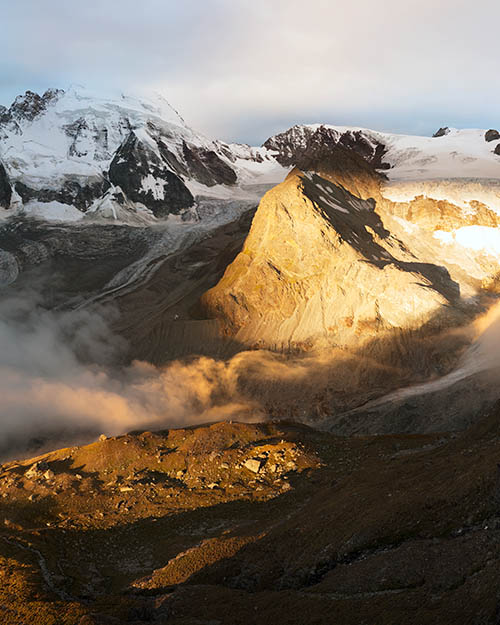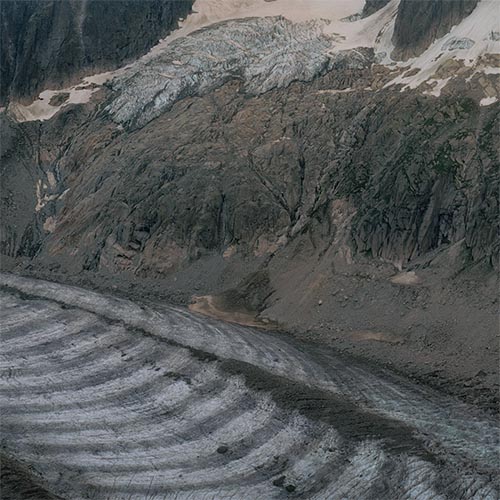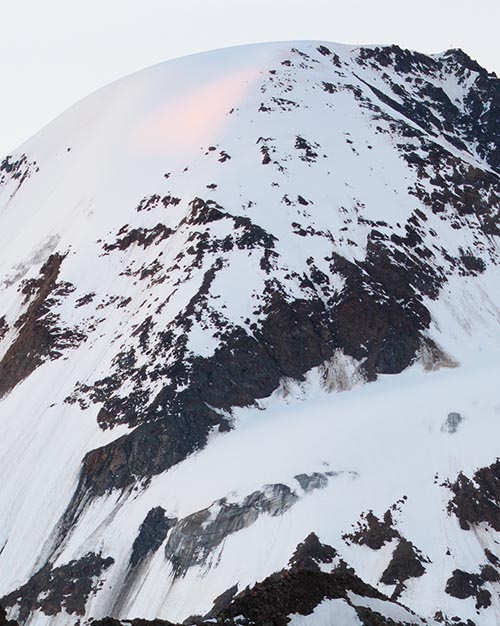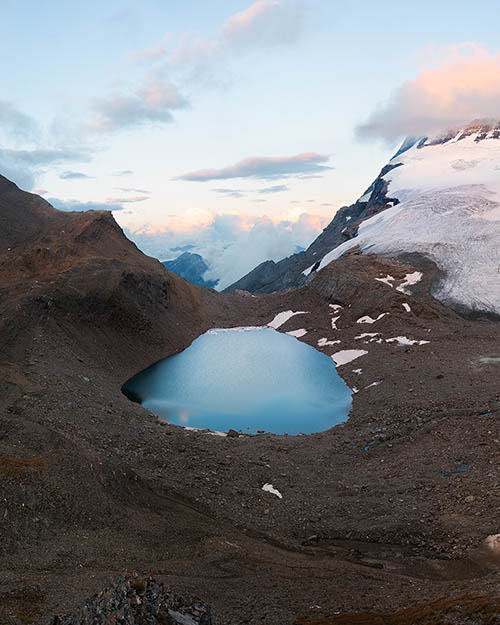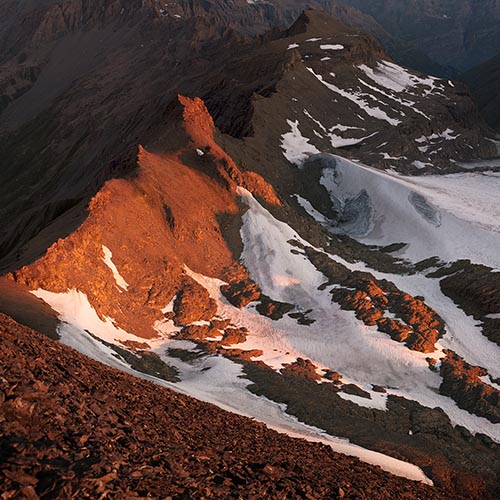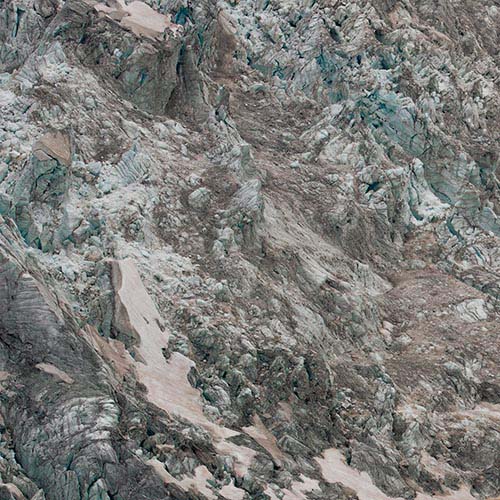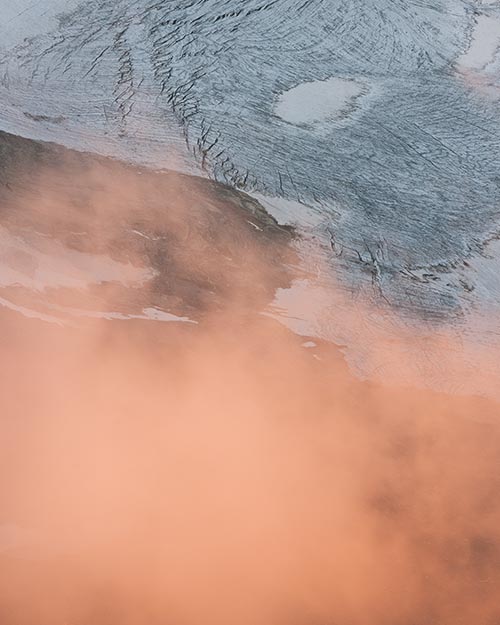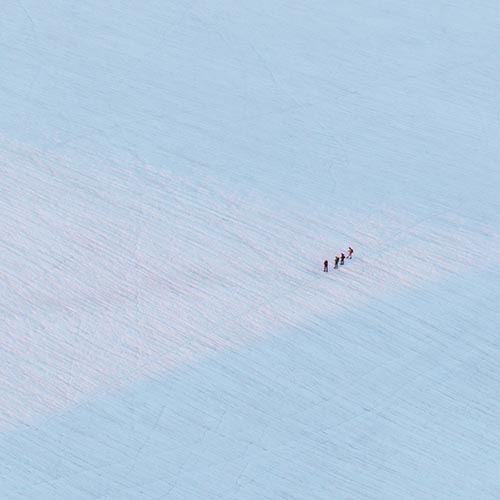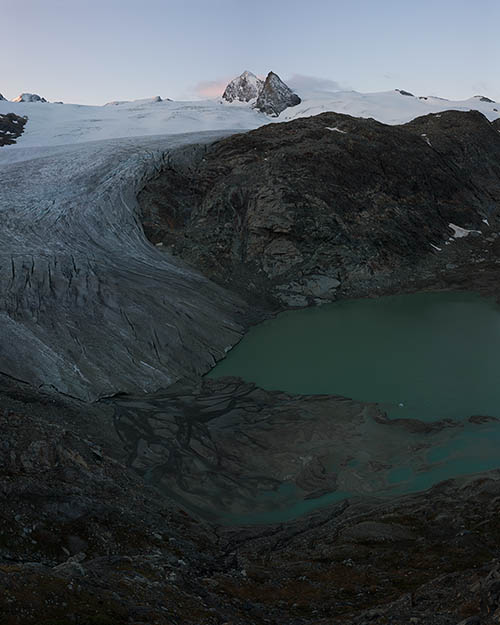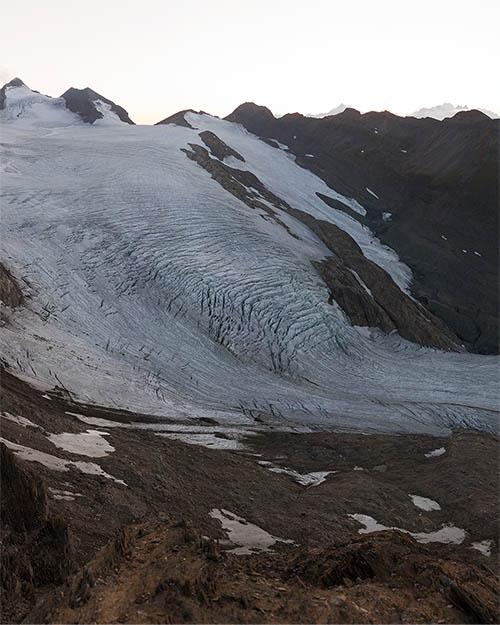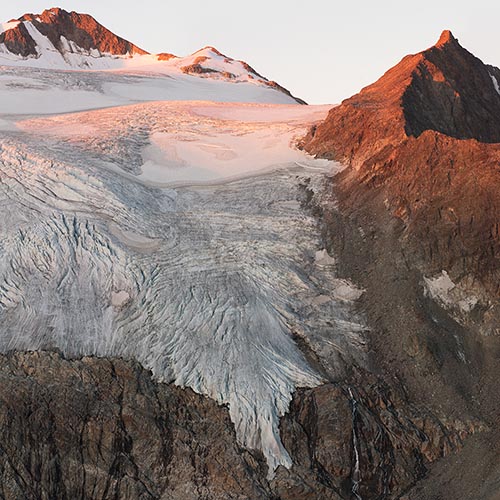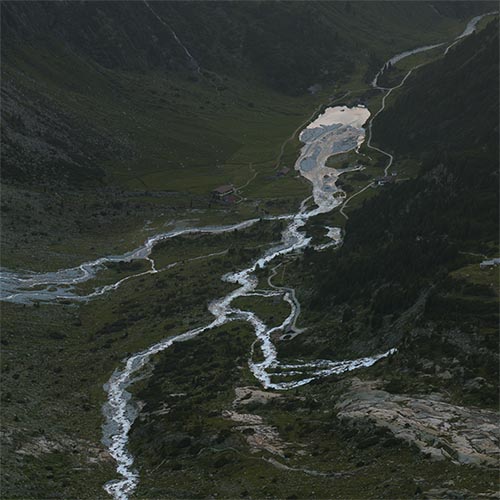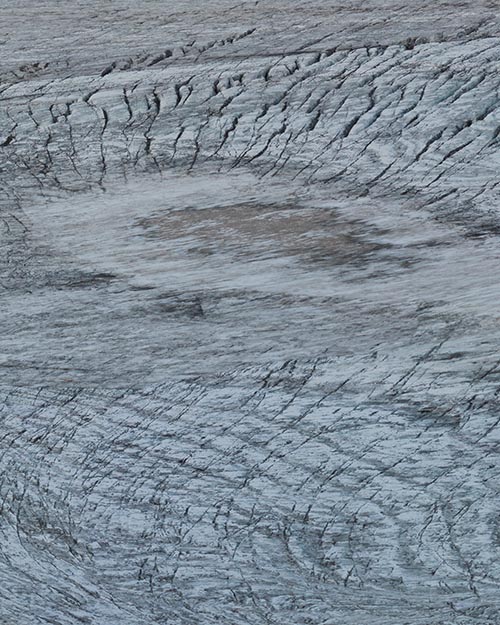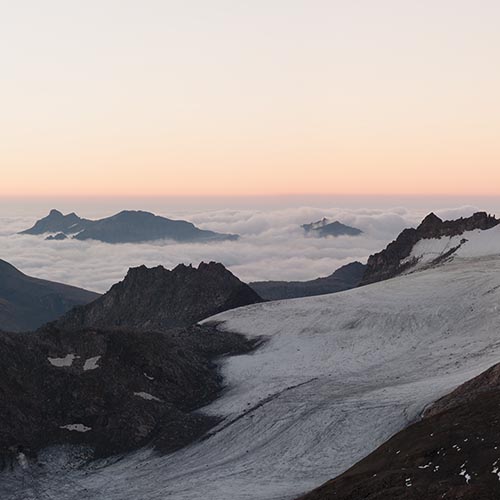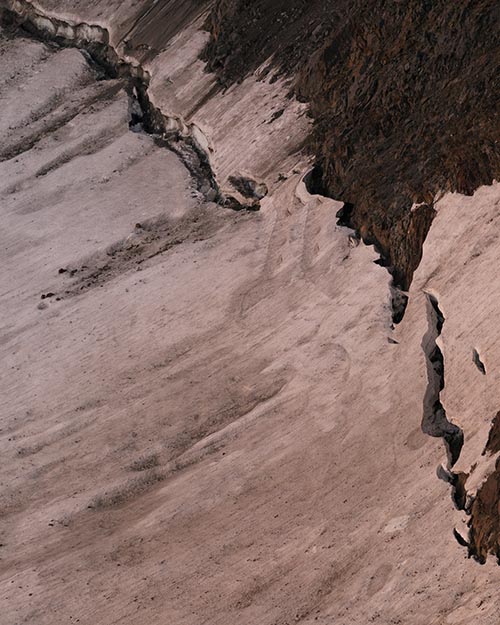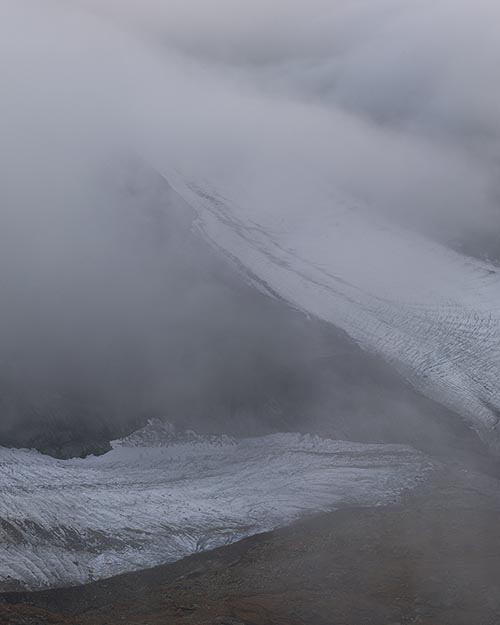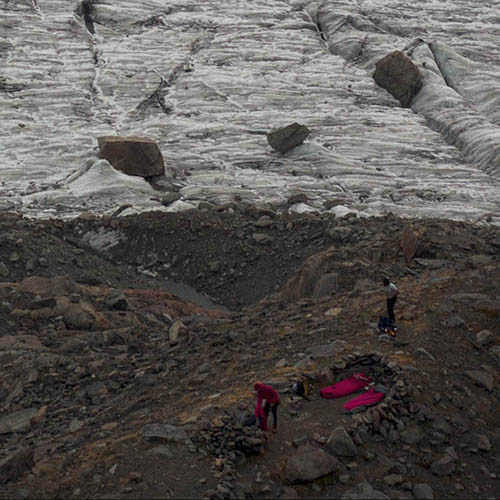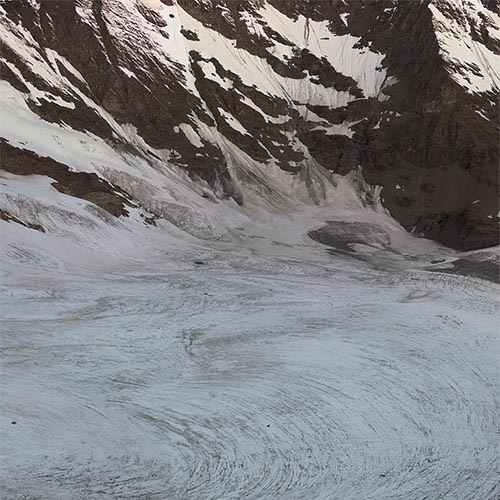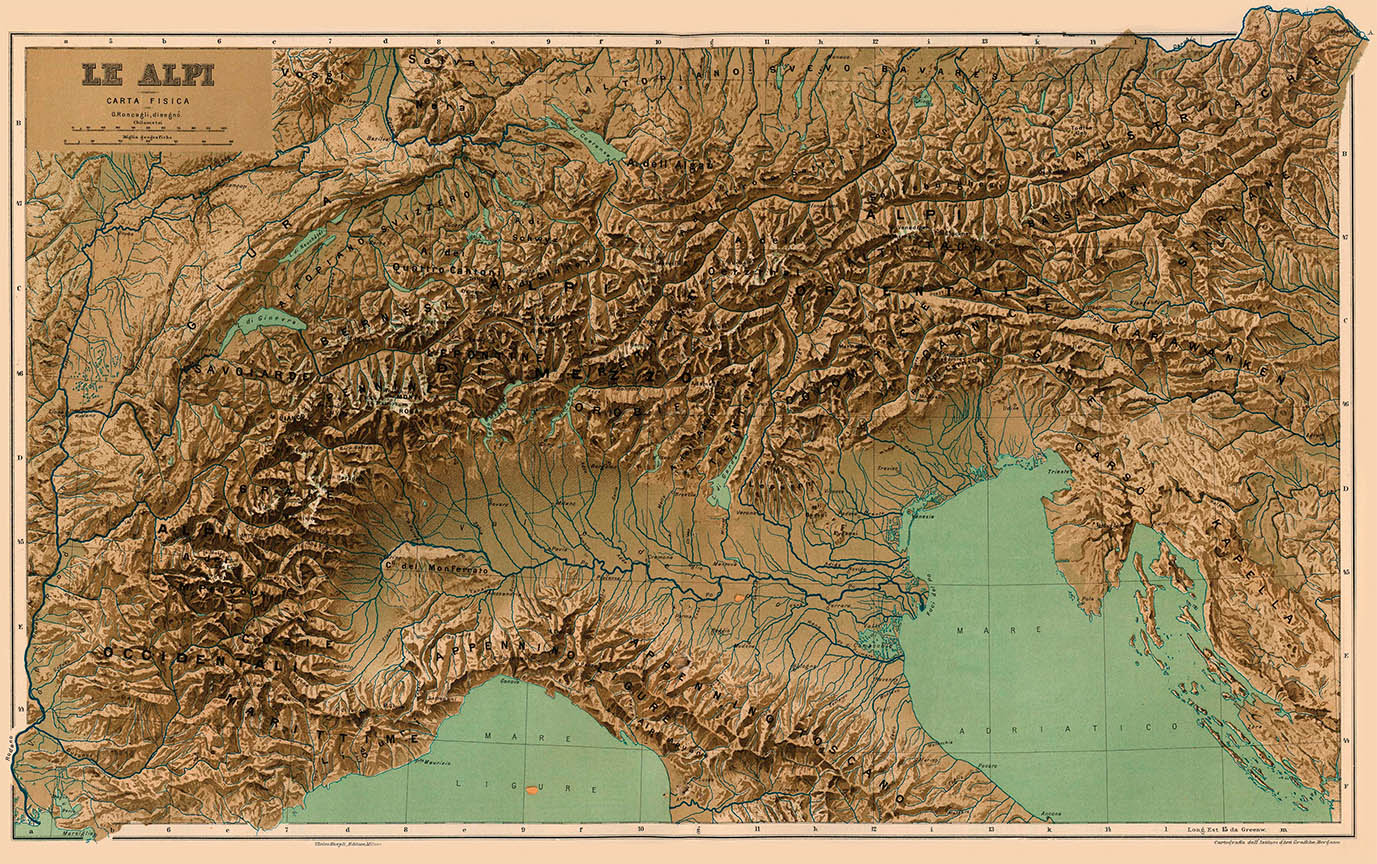Works
As temperatures rise permafrost retreats to higher latitudes and elevations. Terrain softens and crumbles in its wake. The Alps no longer adhere to boundaries surveyed a century ago. In response Switzerland, Italy, Austria and France have rendered their borders fluid in sections. These landscapes contain the aftermath of our industrial age as well as avant-garde views of statecraft for an era increasingly defined by climate change. "Frontière", "frontiera" and "Grenze" are French, Italian and German-language words for border.
Text
Premise
As alpine permafrost retreats to higher colder elevations terrain softens and crumbles in its wake. Boundaries distinguishing Alps nations no longer adhere to the ridge lines and drainage basins they were drawn along. In response Switzerland, Italy, Austria and France have rendered sections of their borders fluid. In a few decades when the mountains re-stabilize new boundaries will be surveyed to honour their various treaties. This willingness to re-imagine conventions of sovereignty is one scant silver lining of glacial extinction. It’s an elegant view of statecraft for an era increasingly defined by climate change. “Frontière", “frontiera", and “Grenze" are French, Italian and German-language words for “border”.
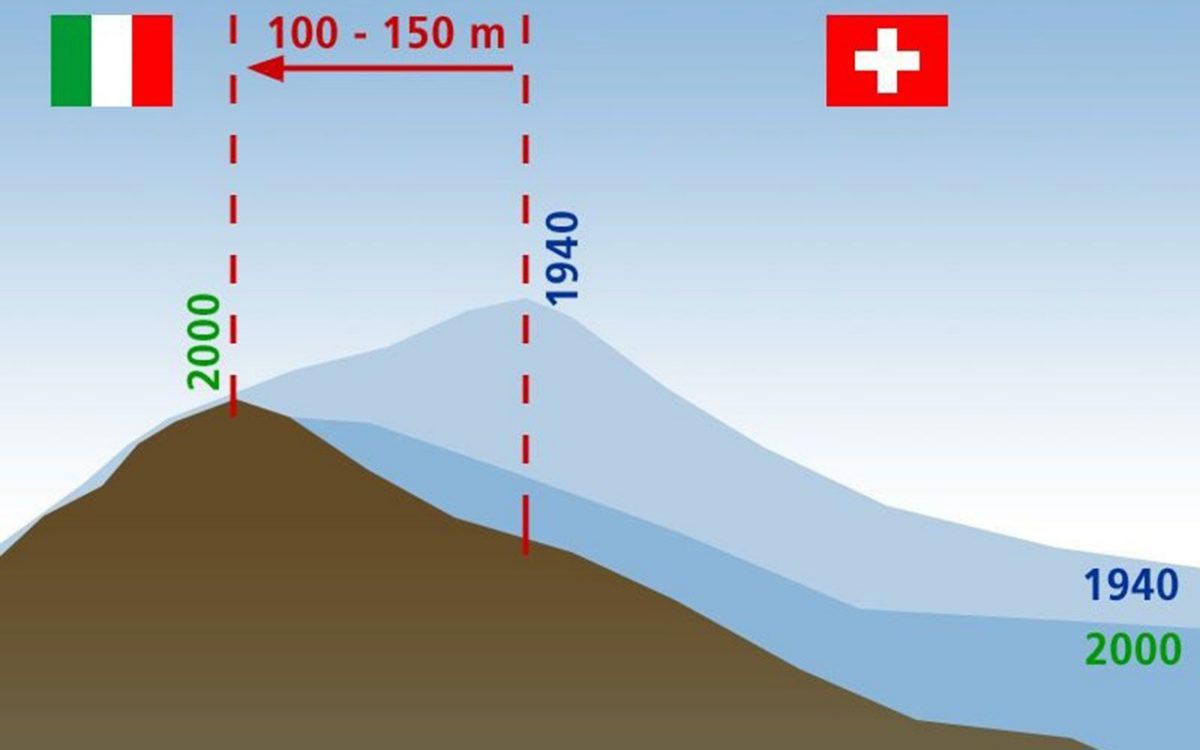
Ötzi
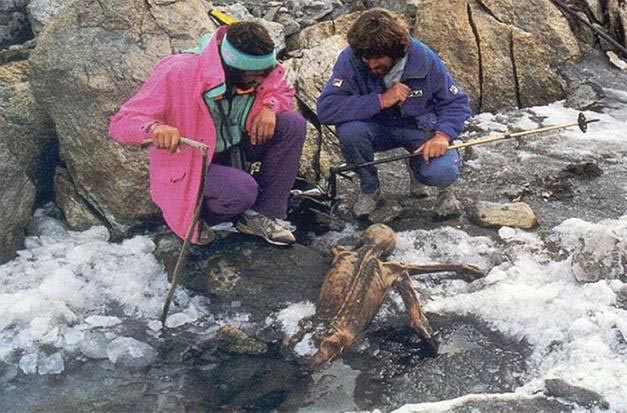
In September 1991 Alps borders weren't topical. The Baltics were newly independent. The USSR would be dissolved by xmas. Cartographers were looking at other things, but then human remains were found on the east ridge of Fineilspitze in the Ötztal Alps. The corpse had emerged from a receding glacier. The following day a hutkeeper and local gendarme went up to chip the body out. It was leathery but intact. They thought it might be from the 19th century; alpinism was newly fashionable then. Bad weather interrupted the recovery, and two days later Hans Kammerlander(!) and Reinhold Messner(!!) visited the site. I love this photo of them squatting with the dignified, fragile mummy. Alas, poor Yorick!
Cold War → Global Warming
Scientists dated the remains back to the late Stone Age. This transformed the find’s valuation in scientific, cultural, and financial terms. Ownership would be interrogated very differently. The mummy dubbed Ọ̈tzi was found in a barely contested part of the Austrian-Italian frontier. On one hand, the site was within the Inn River basin which the 1919 Treaty of St Germain-en-Laye deemed Austria. On the other, the glacier had largely disappeared since then. The landscape had shifted. The line recognized as Italy’s border extended 93m into the Inn watershed. Both nations had legitimate claims, but after backing and forthing The Iceman belonged to Italy. The 20 hottest years on record have occurred since 1995. If I understand correctly, the notion of fluid interim boundaries was formally articulated in the blistering summer of 2003 when Alps permafrost first thawed below 3000m. The need, however, to grasp that climate change would reconfigure maps as profoundly as great wars began with the discovery of Ọ̈tzi. That’s when we shifted from Cold War to global warming anxieties.
Romanticism
Frontière, Frontiera, Grenze is a type of coda to Romanticism. At the onset of the Industrial Age artists like Turner and Caspar David Friedrich elevated landscape motifs to rival the status of history painting. Their Sublime mingled beauty with the tickling terror of vertigo. This project is of that era’s twilight. It’s not butterflies that menace today's viewers but the profound uncertainty of paradigm shift.
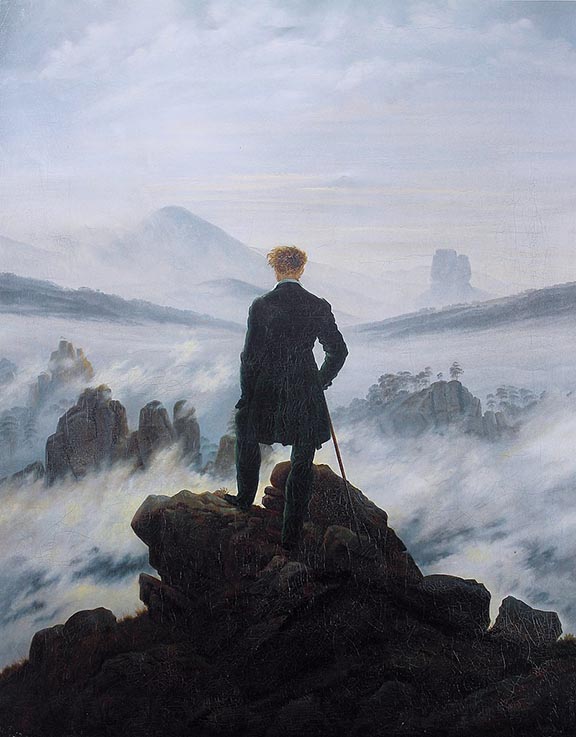
Sella
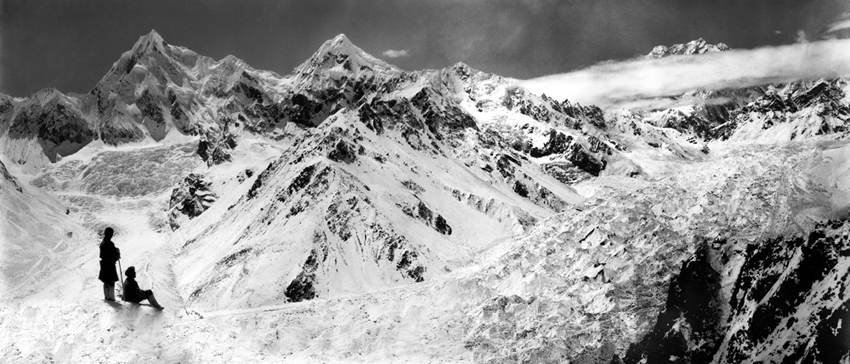
In medium-specific terms Frontière, Frontiera, Grenze follows the legendary mountaineer/photographer Vittorio Sella (1859-1943). I’ll admit I wasn’t familiar with that name until I was well into this work. I’d walked in his footsteps and slept within sight of his camp spots. I’d loved a few of his images for years but lamely credited the vague genius Historical Photographer. It’s interesting to see Sella become newly relevant as his glaciers approach extinction. The comprehensive Vittorio Sella: Mountain Photographs 1879-1909 came out in 2015, and Ansel Adams versus Vittorio Sella was released in 2017. I was honoured to debut this series in the 2- person show Frontière, Frontiera, Grenze: Scott Conarroe & Vittorio Sella.
Prints
Unlike Sella’s glass plate contact prints, these works are large and colourful. Built from dozens of hi-res captures, they’re as related to Google Earth's contiguous satellite tapestries. They tilt skywards and into valleys. They pan up to 200˚ yet can pass as “straight”. They’re impossibly vast for traditional photographic looking. Some are actually reduced to exhibition scale. I see them as virtual contact prints. From a distance they’re expansive. Up close they’re startlingly intricate. Thes works are for leaning into as well as stepping back from.They're for being disoriented when tiny mountaineers or a bivouac reset the scale abruptly.
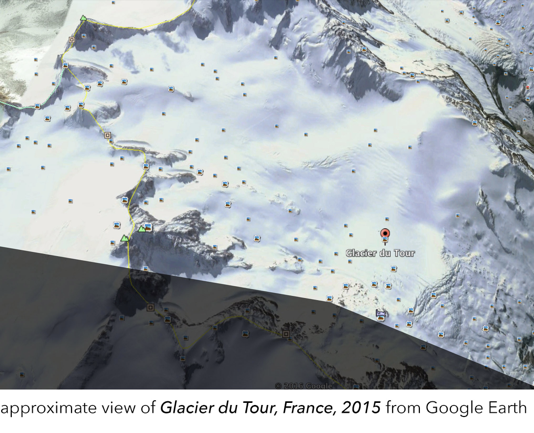
PS
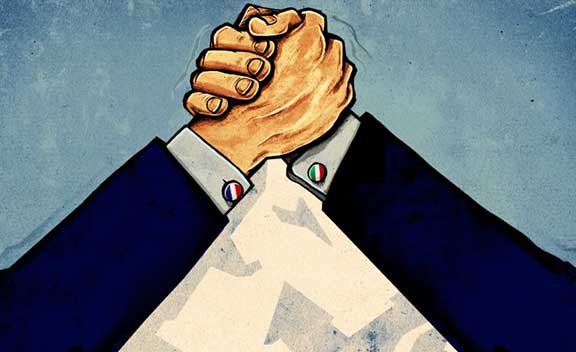
I'm still unclear how the Italy-France border functions. Each nation has agreements with its neighbours so the elegance of boundary fluidity is not a foreign concept. Nonetheless there's friction over the line between Mont Blanc and Monte Bianco. It could be that Europe’s highest peak isn't currently affected by thawing. Or maybe centuries of bickering has become pathological. The two countries there have been agreements, wilful misunderstandings, discretely redrawn maps, and while I was working on this project the mayor of Chamonix physically blocked an Italian access road.
Project-Pressure
Frontière, Frontiera, Grenze is part of Project-Pressure, the world’s first comprehensive crowd-sourced glacier atlas hosted on an open source digital platform (MELT), a touring photographic exhibition, a documentary film and a book publication.
News
South China Morning Post
Project Pressure's "Vanishing Glaciers" in South China Morning Post
Creative Boom
Aesthetica
Ffotoimage
Urbanautica
Photographica
Scott Conarroe & Vittorio Sella: Frontière, Frontiera, Grenze
